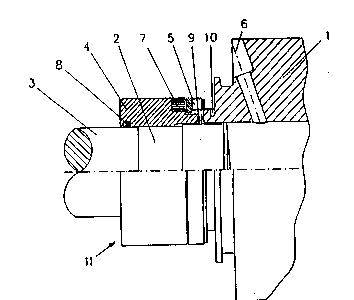Some of the information on this Web page has been provided by external sources. The Government of Canada is not responsible for the accuracy, reliability or currency of the information supplied by external sources. Users wishing to rely upon this information should consult directly with the source of the information. Content provided by external sources is not subject to official languages, privacy and accessibility requirements.
Any discrepancies in the text and image of the Claims and Abstract are due to differing posting times. Text of the Claims and Abstract are posted:
| (12) Patent Application: | (11) CA 2099256 |
|---|---|
| (54) English Title: | SEALING DEVICE FOR AN EXTRUDER |
| (54) French Title: | DISPOSITIF D'ETANCHEITE POUR EXTRUDEUSE |
| Status: | Deemed Abandoned and Beyond the Period of Reinstatement - Pending Response to Notice of Disregarded Communication |
| (51) International Patent Classification (IPC): |
|
|---|---|
| (72) Inventors : |
|
| (73) Owners : |
|
| (71) Applicants : |
|
| (74) Agent: | SMART & BIGGAR LP |
| (74) Associate agent: | |
| (45) Issued: | |
| (86) PCT Filing Date: | 1992-12-07 |
| (87) Open to Public Inspection: | 1993-06-24 |
| Examination requested: | 1999-07-29 |
| Availability of licence: | N/A |
| Dedicated to the Public: | N/A |
| (25) Language of filing: | English |
| Patent Cooperation Treaty (PCT): | Yes |
|---|---|
| (86) PCT Filing Number: | PCT/NO1992/000191 |
| (87) International Publication Number: | WO 1993011887 |
| (85) National Entry: | 1993-06-25 |
| (30) Application Priority Data: | ||||||
|---|---|---|---|---|---|---|
|
2099256 9311887 PCTABS00022
A device on an extruder for the evacuation of air, consisting of
a cylinder (1) with a die mounted at one end, the outlet, and a
piston (2) designed to move from a position outside the other end,
the inlet, to a position inside the cylinder. At the inlet, a
separate sealing device (11) is mounted which accompanies the
piston when it is retracted from the cylinder. The sealing device
consists of a casing (4) with sealing rings (8, 9) mounted on the
piston/piston rod (2, 3).
Note: Claims are shown in the official language in which they were submitted.
Note: Descriptions are shown in the official language in which they were submitted.

2024-08-01:As part of the Next Generation Patents (NGP) transition, the Canadian Patents Database (CPD) now contains a more detailed Event History, which replicates the Event Log of our new back-office solution.
Please note that "Inactive:" events refers to events no longer in use in our new back-office solution.
For a clearer understanding of the status of the application/patent presented on this page, the site Disclaimer , as well as the definitions for Patent , Event History , Maintenance Fee and Payment History should be consulted.
| Description | Date |
|---|---|
| Inactive: Dead - No reply to s.30(2) Rules requisition | 2002-11-18 |
| Application Not Reinstated by Deadline | 2002-11-18 |
| Inactive: Abandoned - No reply to s.30(2) Rules requisition | 2001-11-19 |
| Inactive: S.30(2) Rules - Examiner requisition | 2001-05-17 |
| Letter Sent | 1999-08-05 |
| Inactive: Application prosecuted on TS as of Log entry date | 1999-08-05 |
| Inactive: Status info is complete as of Log entry date | 1999-08-05 |
| Request for Examination Requirements Determined Compliant | 1999-07-29 |
| All Requirements for Examination Determined Compliant | 1999-07-29 |
| Application Published (Open to Public Inspection) | 1993-06-24 |
There is no abandonment history.
The last payment was received on 2002-11-06
Note : If the full payment has not been received on or before the date indicated, a further fee may be required which may be one of the following
Please refer to the CIPO Patent Fees web page to see all current fee amounts.
| Fee Type | Anniversary Year | Due Date | Paid Date |
|---|---|---|---|
| MF (application, 5th anniv.) - standard | 05 | 1997-12-08 | 1997-11-26 |
| MF (application, 6th anniv.) - standard | 06 | 1998-12-07 | 1998-11-17 |
| Request for examination - standard | 1999-07-29 | ||
| MF (application, 7th anniv.) - standard | 07 | 1999-12-07 | 1999-11-17 |
| MF (application, 8th anniv.) - standard | 08 | 2000-12-07 | 2000-11-14 |
| MF (application, 9th anniv.) - standard | 09 | 2001-12-07 | 2001-11-09 |
| MF (application, 10th anniv.) - standard | 10 | 2002-12-09 | 2002-11-06 |
Note: Records showing the ownership history in alphabetical order.
| Current Owners on Record |
|---|
| NORSK HYDRO A.S. |
| Past Owners on Record |
|---|
| KAI MAGNE VIK |
| LARS AURAN |
| OLE JOHAN SõRHEIM |